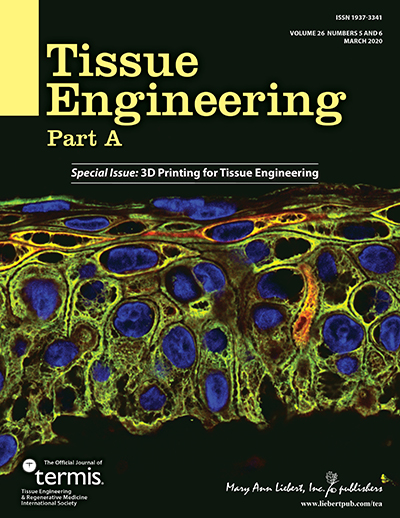
We have an update on a post we published late last month.
We reported on March 31 that Tissue Engineering had retracted a paper by Xing Wei, of the, National Engineering Research Center of Genetic Medicine at Jinan University, in Guangzhou, China, because of image manipulation. The retraction notice for that paper, “Use of Decellularized Scaffolds Combined with Hyaluronic Acid and Basic Fibroblast Growth Factor for Skin Tissue Engineering, referred to another paper in the journal that was being retracted, but had not yet been. It also referred to a paper in a different journal that showed signs of misconduct, but that had yet to be retracted, either.
We were checking this week to see if the other papers had been retracted, mostly just to make sure our database was up to date. The second paper, Promoting the Recovery of Injured Liver with Poly (3-Hydroxybutyrate-Co-3-Hydroxyvalerate-Co-3-Hydroxyhexanoate) Scaffolds Loaded with Umbilical Cord-Derived Mesenchymal Stem Cells, has indeed been retracted, although the one in Tissue Engineering Constructs and Cell Substrates has not.
What was far more interesting, however, was that when we looked at a retraction notice for the first paper, we saw something we hadn’t seen in it before: Wei had earned an “indefinite ban” from publishing in the journal:
Wei was only banned from Tissue Engineering, and not any other journals published by Mary Ann Liebert, said Susan K. Jensen, director of editorial services and peer review at Liebert:
The decision to ban any author from submitting is made prior to issuing a formal retraction. Depending on the nature of any given violation, the notice itself may or may not indicate publicly whether the author is banned.
In this case, the notice — or notices — did and didn’t mention the ban. We’ll explain.
When the paper was first retracted, the version of the retraction notice on the article itself included a passage mentioning the ban. It no longer does.
Here’s Jensen’s explanation:
We always replace a retracted article’s abstract with the official retraction notice in addition to issuing/publishing a formal stand-alone retraction notice. I have determined that we experienced a slight glitch whereby the article version containing the retraction in place of the abstract (and which was the link you provided me) was the uncorrected page proof version of the retraction notice, and not the final version. While the editors did initiate a ban on the author submitting to Tissue Engineering, they decided to remove it from the page proofs of the retraction notice to avoid unnecessary or potential public embarrassment to the author. We have updated the article version (https://www.liebertpub.com/doi/10.1089/ten.tea.2013.0260) so that it matches the official retraction notice (https://www.liebertpub.com/doi/10.1089/ten.tea.2013.0260.retract).
Publishing bans are relatively rare — or at least they would seem to be, based on how often journals notify readers of them. Liebert vice president and executive editor Sophie Reisz told us:
We are very careful when making the decision to “ban” authors from future submission to our publications. We understand this decision to blacklist authors from submitting to our journals can be detrimental to their careers and so we approach this decision with careful consideration.
With that said, we take any form of scientific misconduct extremely seriously and assess each situation on a case-by-case basis along with important input from our Editors. In some cases, we ban authors from submitting for a year or two, in other cases we may ban then for up to five years, or, in worst cases, we ban them indefinitely. It all depends.
With each situation, we take additional measures to promptly inform the PIs, Deans, and Chairs of University Departments to let them know of the misconduct we encountered with one of their academic staff.
Wei has not responded to repeated requests for comment.
Like Retraction Watch? You can make a tax-deductible contribution to support our work, follow us on Twitter, like us on Facebook, add us to your RSS reader, or subscribe to our daily digest. If you find a retraction that’s not in our database, you can let us know here. For comments or feedback, email us at [email protected].
I think such a ban is necessary in extreme cases, especially if it can be shown the person being banned is a repeat offender that is not bound by the accepted ethical or moral codes in scientific research.